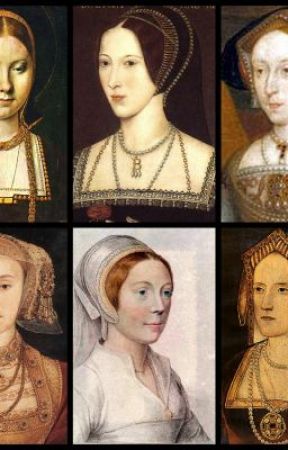-I've always been fascinated with the subject of the Tudors for as long as I can remember, and this work is dear to me. I will admit that some things are not historically correct; and this section is to clarify those or to add more background information for others who might be (understandably) confused about some things in the story. I should have done this from the exact moment I released these stories; but since then I have been editing some bits and pieces and going over them again and again over the months. So I am finally doing this now, for the sake of the readers and looking professional, and, dare I say it, I am a natural geeky nerd who likes writing, so, whatever.
Henry VIII (1491-1547) is the stronghold for these stories; but of course, it isn't his story, but his wives'. Henry's six wives have always interested me. Six women forced to dance around this large maypole, under the pressure, for the most part, to bear a son, and to please Henry, whose moods could easily change. Each woman also had their own strength, a resilience of their own that sprouted once given the position of Henry's wife. Katharine of Aragon was certainly strong; but so was plain Jane Seymour, and the unwanted Anna of Cleves; even silly, vain Kathryn Howard. Briefly, however, Henry was a handsome, jovial, athelitc prince turned into an insecure, moody tyrant. He could be vastly unscrupulous in ways that seemed brutal and cruel; he was so assured of his own rightness to a point he seemed like a fool seeped in vanity; he was determined in preserving the Tudor line by whelping many sons, which would doom many of his marriages. However, Henry was also charming when he cared to be so; he had a sort of strong aura that made people look to him in deference, and would make others feel special to have being the same room as him (though this aura diminished as he grew older). He could be generous and doting and loving. In all, Henry VIII was a great King in many respects, despite his failings.
Katharine of Aragon (1485-1536) was Henry's first wife, the daughter to the great monarchs Isabella and Ferdinand of Spain. She actually wed Henry's older brother Arthur first in 1501; but after his premature death in 1502 she stayed in England, in relative poverty and misery, until Henry rescued her, so to speak. He married her not so much because he needed Spain as an ally, or his father told him to before his death; romantically, Henry fell in love with this beautiful Spanish princess. They lived happily together, tainted only by miscarriages. Katharine was every inch a perfect, Catholic wife; she was good and gracious, dignified and proper, good-hearted and calm. But then Henry fell for Anne Boleyn; and Katharine was being told to abdicate and annul her position. She braved the storm, but in the end she was exiled by her own husband, distanced from her only child Mary. Katharine died quite alone and sad, but still persisting she was the true Queen until the end.
Anne Boleyn (c.1501-1536) was the second wife. Daughter to an ambitious father whose beginnings were obscure and low-the Boleyns started out as merchants-Anne rose to the occasion. She was vivacious and witty, quick of wit and sharp of tongue. Anne was admired by many, at least, in her prime; she had her own circle of young men to mingle with. Henry noticed her at once, with her dark hair and dark eyes. He fell drastically in love. What followed was a mess of events; Henry stubbornly persisting Katharine had not been his true wife, since she'd married his brother before; Katharine persisting and staying strong, denying everything; the Pope dithering and not helping at all; Anne growing impatient. She waited seven years before she was Queen at last. It is a mystery how Henry and Anne managed to stay in love for that long despite all the hurdles before them, especially with Anne denying Henry's physical advances. Anne was not, however, loved by the people. Once she was Queen, Anne was no longer the sweet lover. She was prone to rages and fits of jealousy and envy; she miscarried twice and birthed only a girl, Elizabeth. This perpetuated her downfall. Patently false charges of incest, witchcraft and adultery were dropped on her head, and Anne was executed after her brother and a few of the men in her social circle, on 19 May 1536.

YOU ARE READING
The Six
Historical Fiction'Divorced, beheaded, died; divorced, beheaded, survived." In this way, the six wives of Henry VIII were remembered not for how they lived, but in the way they died. It is impossible to know exactly what they were thinking or had to go through, in h...
